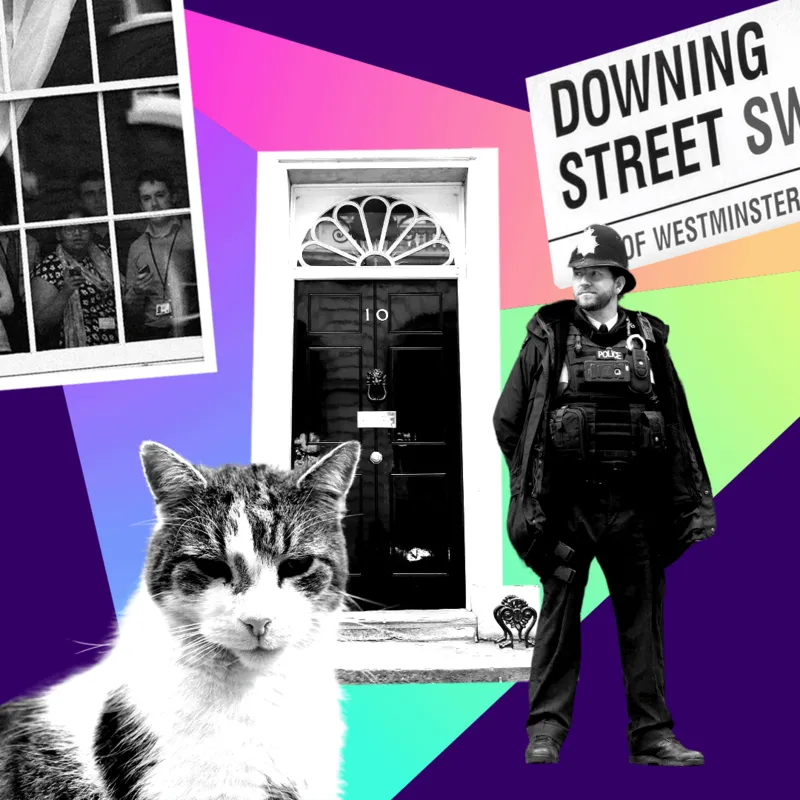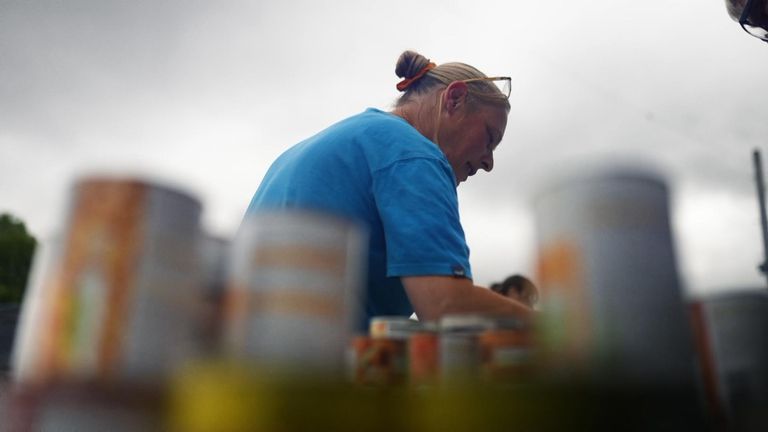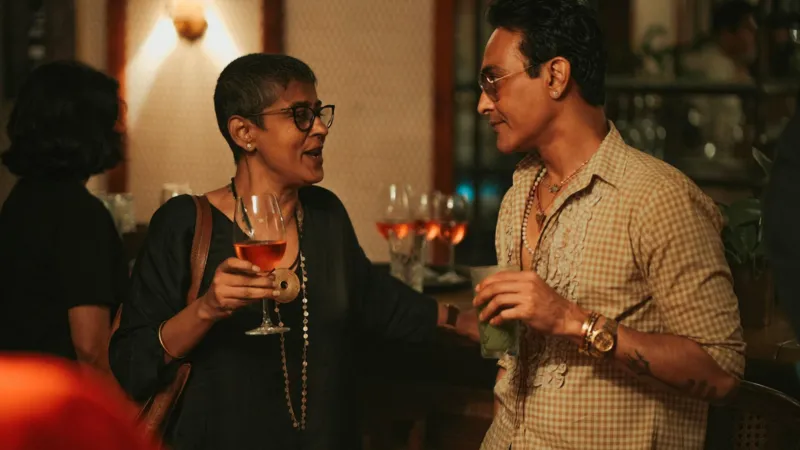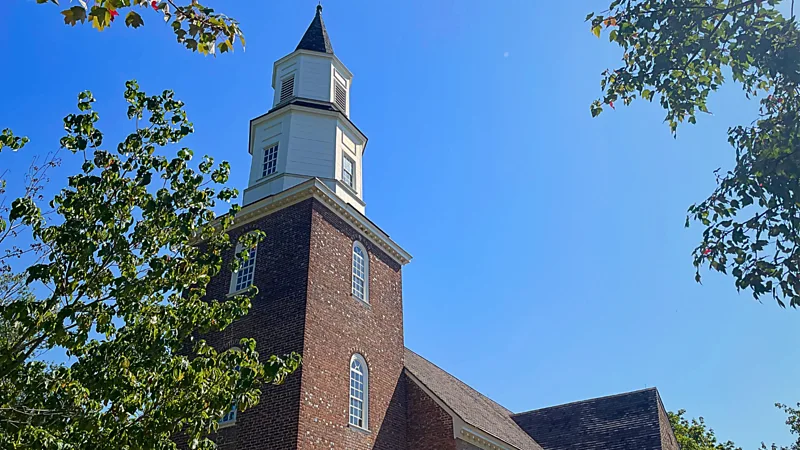Moving into Downing Street: life behind the iconic black door
Out with the old, in with the new.

Nothing represents the rapid, ruthless business of politics like removal vans at Downing Street.
Moving a new prime minister - staff, family, pets and paraphernalia - into 10 Downing Street is a complex feat. Here’s how it happens.
Sunaks out, Starmers in
Prime Minister Keir Starmer speaking outside No 10 after the 2024 election
The first thing to know: it happens in a day.
Former Prime Minister Rishi Sunak vacated 10 Downing Street on Friday after Labour won a landslide victory in the general election.
Shortly after, new PM Sir Keir Starmer and wife Victoria Starmer arrived at No 10.
"The work of change begins immediately," Mr Starmer said outside the iconic black door, before walking into his new office and home.
The couple's children, unlike some of former prime ministers, did not feature in the photograph on the Downing Street steps.
That's because the Starmers have chosen to keep their 16-year-old son and 13-year-old daughter out of the public eye.
Rather than have the PM fumble for their keys, Downing Street security staff open the door as soon as the prime minister turns to face it.
That’s not always obvious, as one aide to former Labour PM Tony Blair recalled in 2021.
“Tony finished his speech. He’s doing his wave, and the family and Cherie is there and it’s all lovely,” said Kate Garvey, recalling the moment in 1997 when Mr Blair took office.
“But I could see he had a hesitation.
“And I knew it, the door! How does the door open?”
With an eye on the CCTV monitor and a hand on the door, the in-house staff spring into action when they get their cue, a detail that might be easy to forget in the whirlwind of an election victory.
Getty Images David Cameron and wife Samantha are applauded upon entering Downing Street Getty Images
David Cameron and wife Samantha are applauded upon entering Downing Street
Once inside, the prime minister is greeted by Downing Street staff. These include civil servants, politically appointed special advisers, and permanent staff including chefs and security guards.
Staff usually line the corridors and applaud the new leader on their first day.
Staying at No 10 or No 11?
The prime minister taking up residence at No 10 is a historic moment for a new government - but the leader may end up living in the house next door.
Starting with the Blair family in 1997, prime ministers including Boris Johnson and David Cameron have often chosen to live in the more spacious four-bedroomed flat at No 11.
Boxes, boxes, boxes
“It’s their home and it’s quite a big home,” said Stephen Morris, managing director of the removal firm which packed the possessions of the Blairs into 2,000 boxes when they left Downing Street in 2007.
“You don’t let people know what it is you’re moving,” Morris said. “Because you hear and see things that a newspaper would like!”
Politics can move fast, and so must removals.
Morris recalls receiving a phone call in 2010 the evening Prime Minister Gordon Brown resigned, asking his team to be ready to start moving the next day.
Curtains, carpets, coats of paint
Prime ministers can give Downing Street a fresh lick of paint, making use of an annual public grant of £30,000 to carry out renovations.
But Boris Johnson and his wife Carrie were criticised when their extensive revamp of the flat above No 11 cost more than £200,000.
Mr Johnson and his wife wanted to transform the flat from previous Prime Minister Theresa May's "John Lewis furniture nightmare" into a "high society haven", according to the society magazine Tatler.
The work was initially paid for by the Cabinet Office, but £52,000 was given to the Conservative Party by Tory donor Lord Brownlow to cover the bills.
The Electoral Commission fined the Tory party and found it had failed to accurately declare all of Lord Brownlow's donations towards the renovation.
A political powerhouse and family home
Once he's moved in, Downing Street will be where Sir Keir conducts his most important duties, such as holding cabinet meetings and welcoming foreign leaders. But it’s also a family home, hosting birthday parties and space for relaxation.
Getty Images Portraits of former prime ministers at No 10 Downing Street Getty Images
Portraits of former prime ministers hang inside the residence
It’s a “strange dynamic”, said Jack Brown, a former researcher in residence at No 10.
“It’s both a place of work and family… and it’s important to the prime minister’s premiership that they and their family feel comfortable there.”
The family of Harold Macmillan, Conservative prime minister from 1957 to 1963, reportedly enjoyed their time in Downing Street, although there were strict rules about children riding bikes through the corridor during cabinet meetings.
But former Labour Prime Minister Harold Wilson and his family found “disturbances by officials” difficult. Mary Wilson installed a doorbell in her second-floor rooms to stop civil servants from intruding.
Rishi Sunak with his wife and daughters putting candles outside of No 10 to mark Diwali
Friday nights in the Starmer household are family-first.
“We’ve had a strategy in place - and we’ll try to keep to it - which is to carve out really protected time for the kids,” Sir Keir told Virgin Radio. “So on a Friday - I’ve been doing this for years - I will not do a work-related thing after six o’clock, pretty well come-what-may.”
What these Friday nights entail in the new home will be one of the many choices facing the Starmer household.
Over the next few days, they’ll have a lots of boxes to unpack. And one more critical, if quieter, task for the new prime minister: turning the heart of political power into a family home.
-bbc






